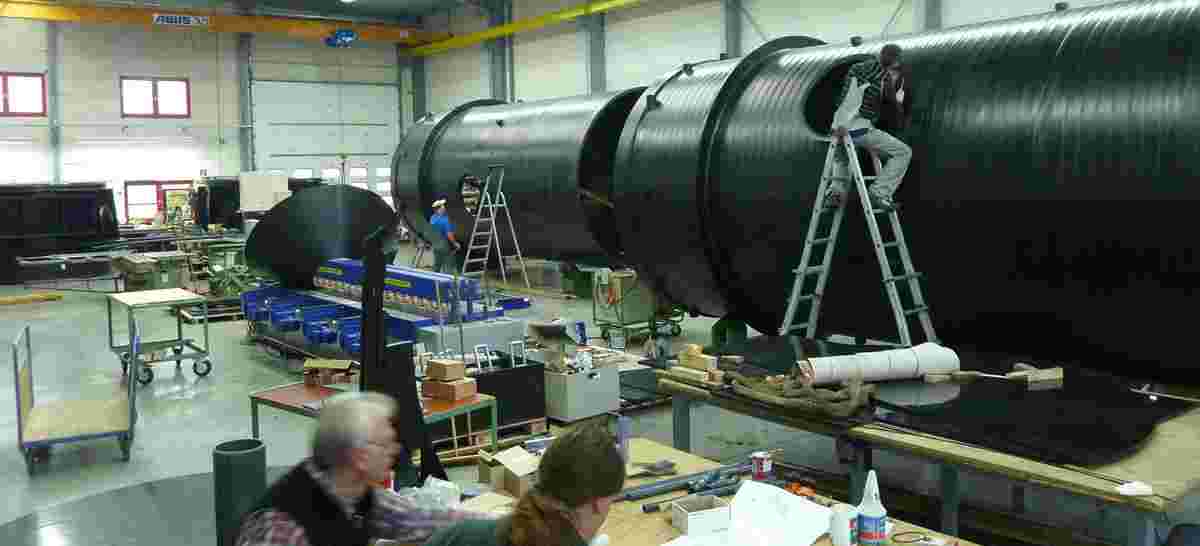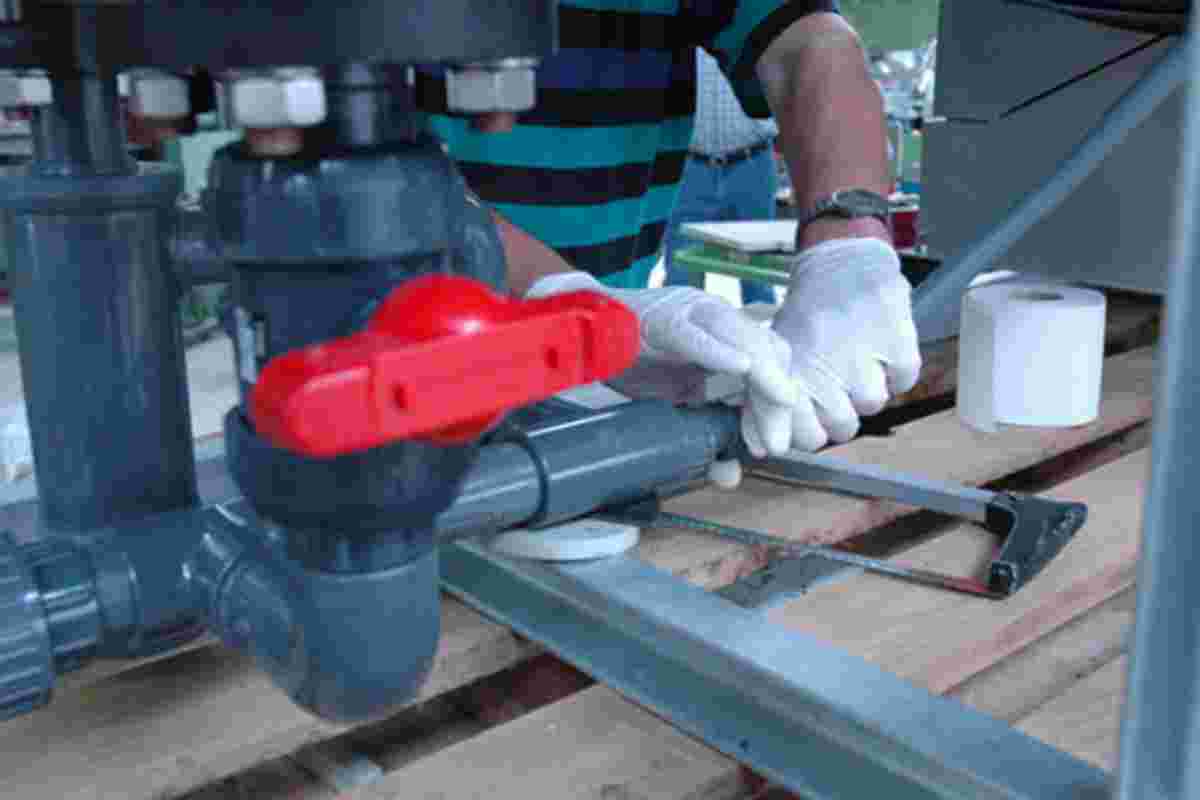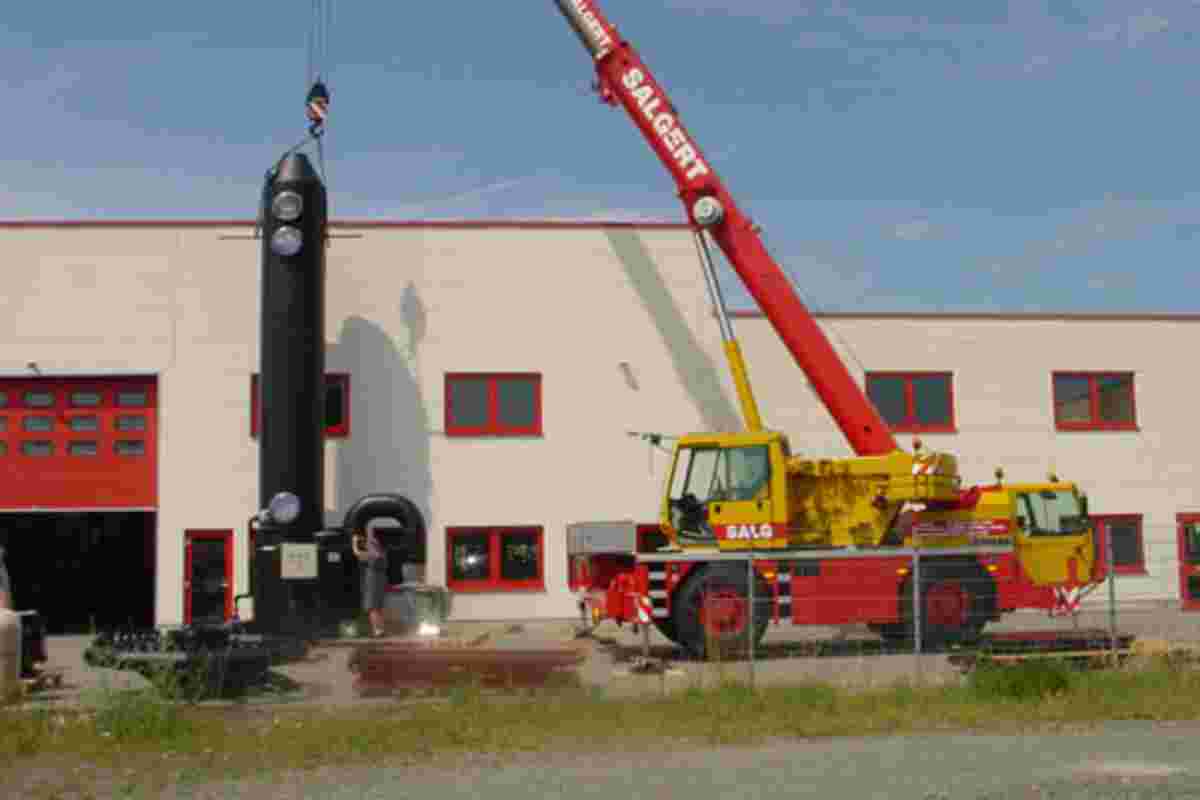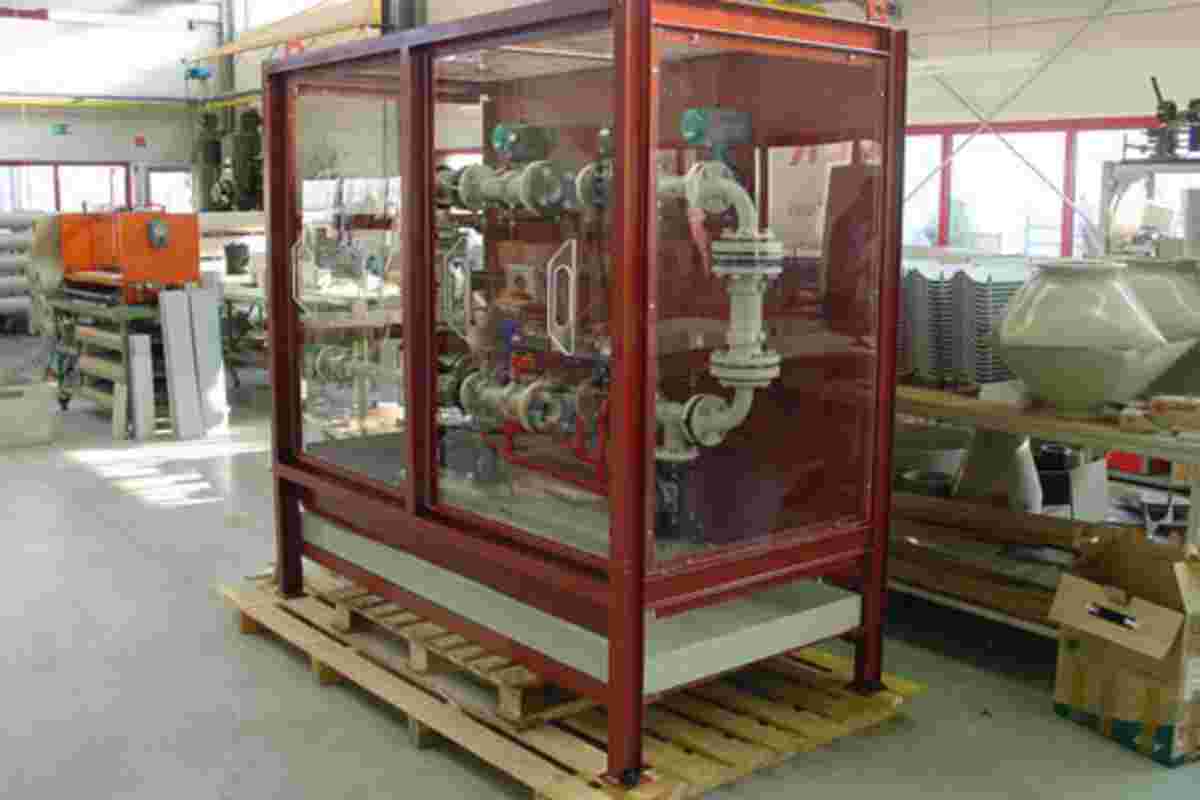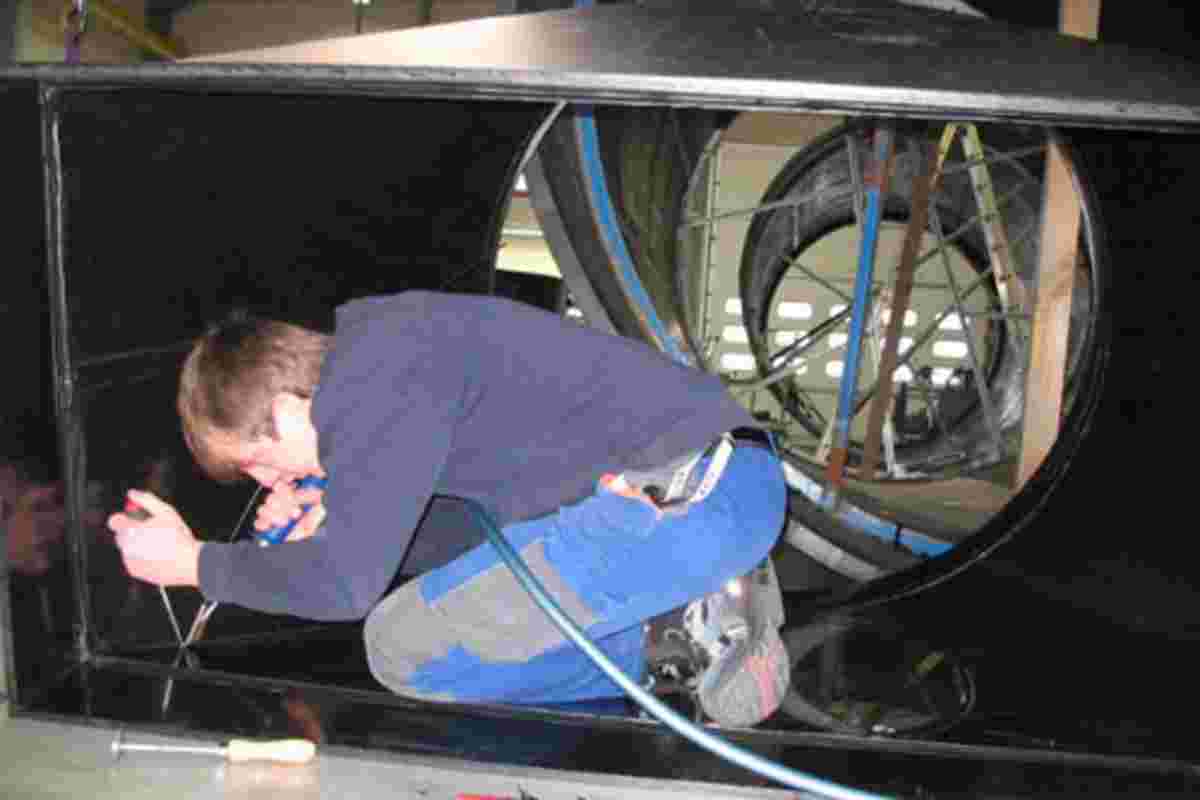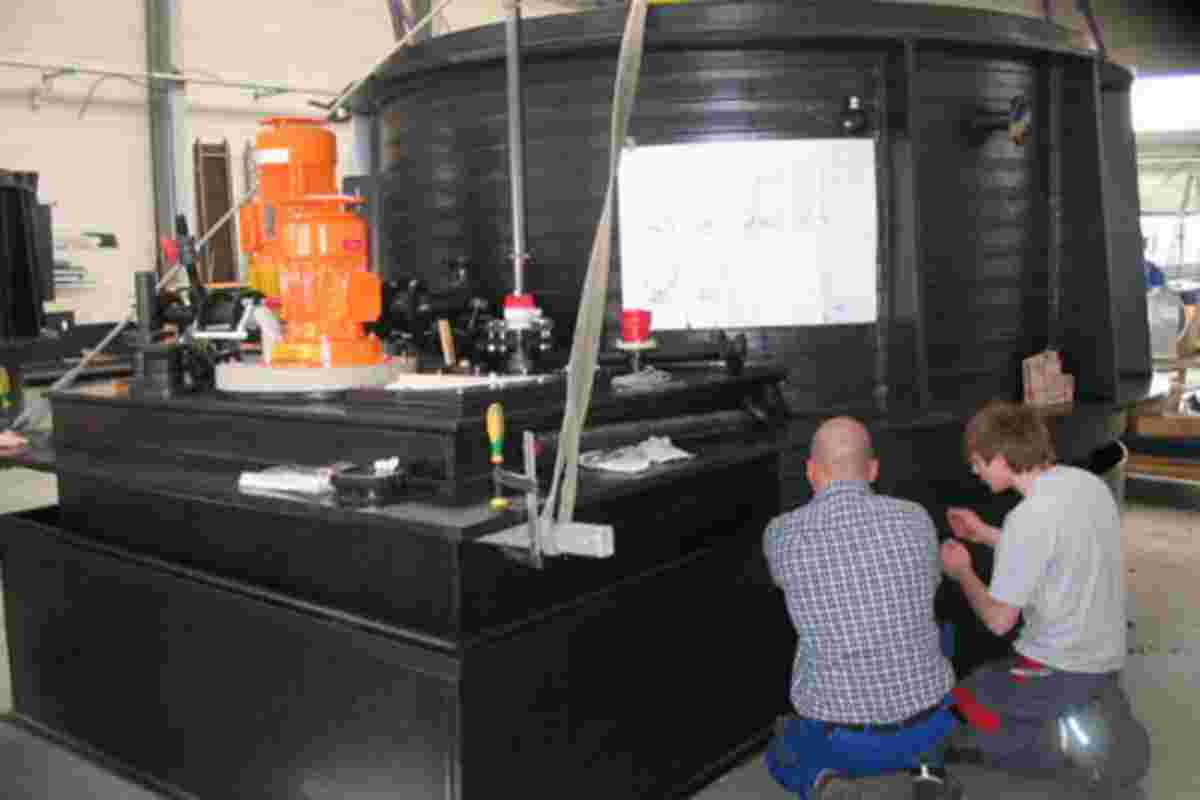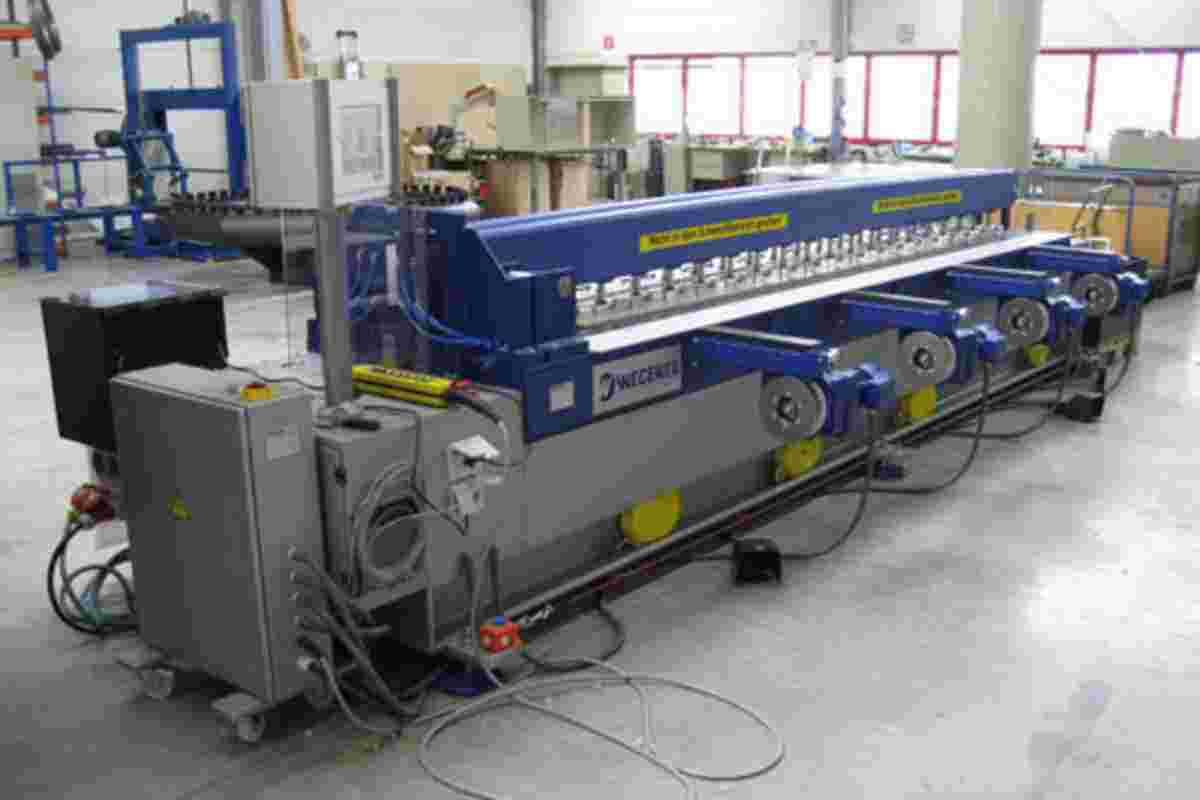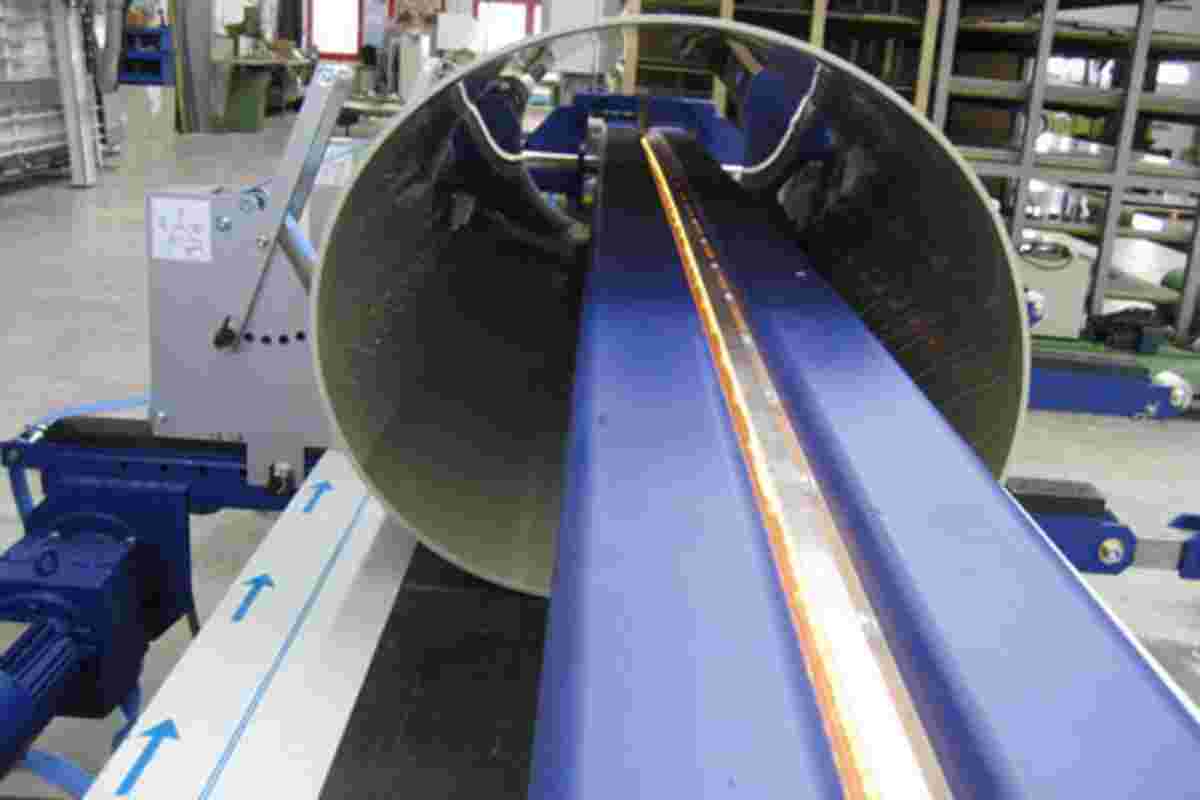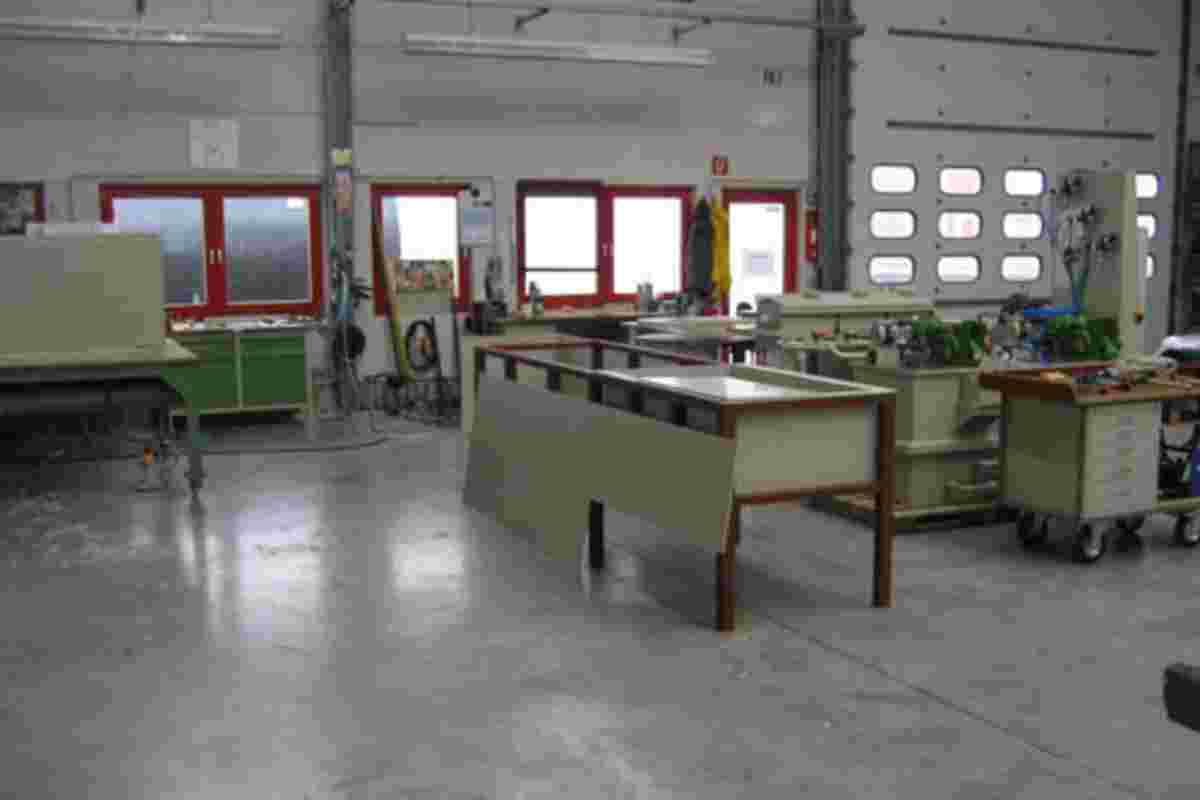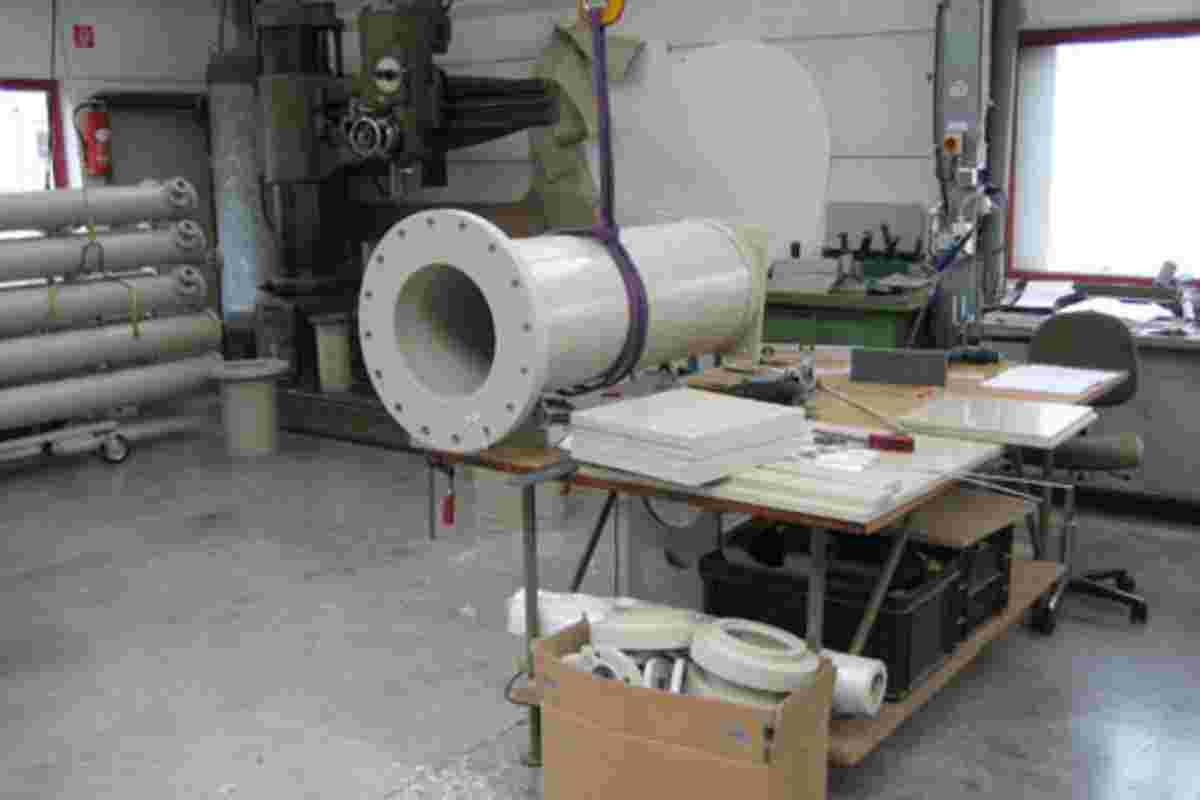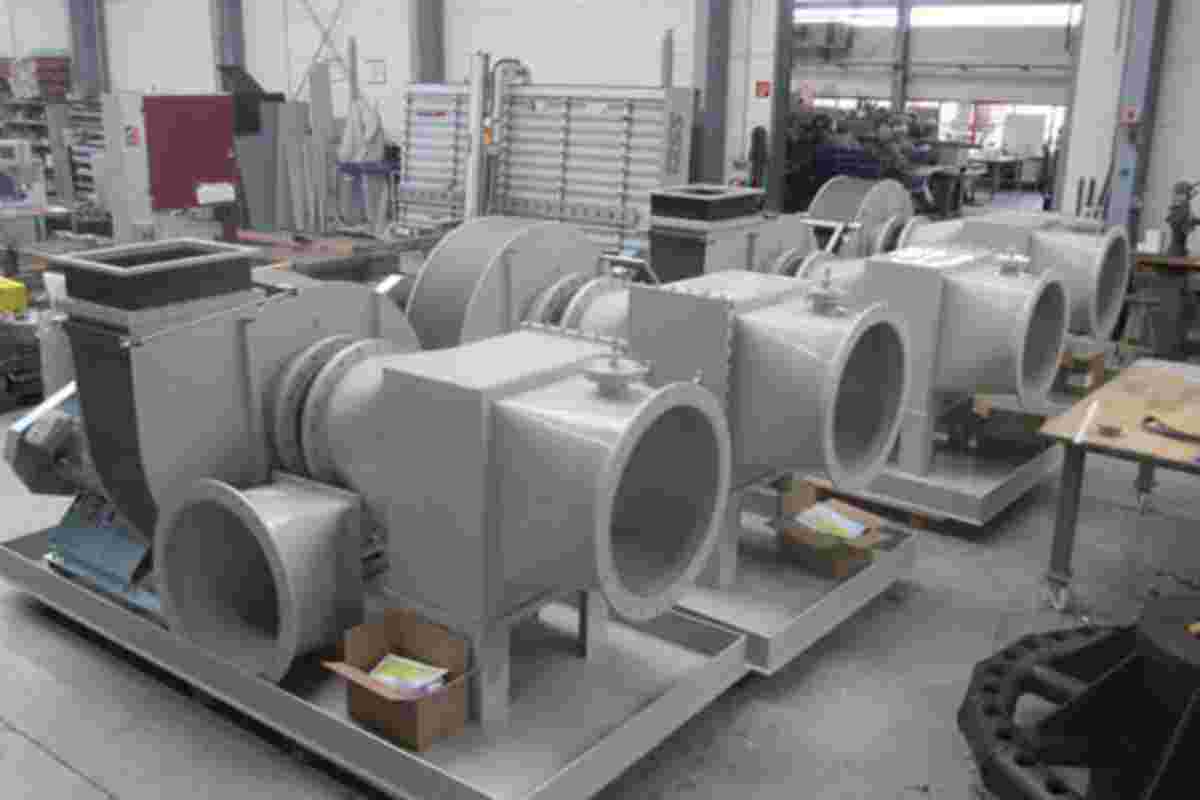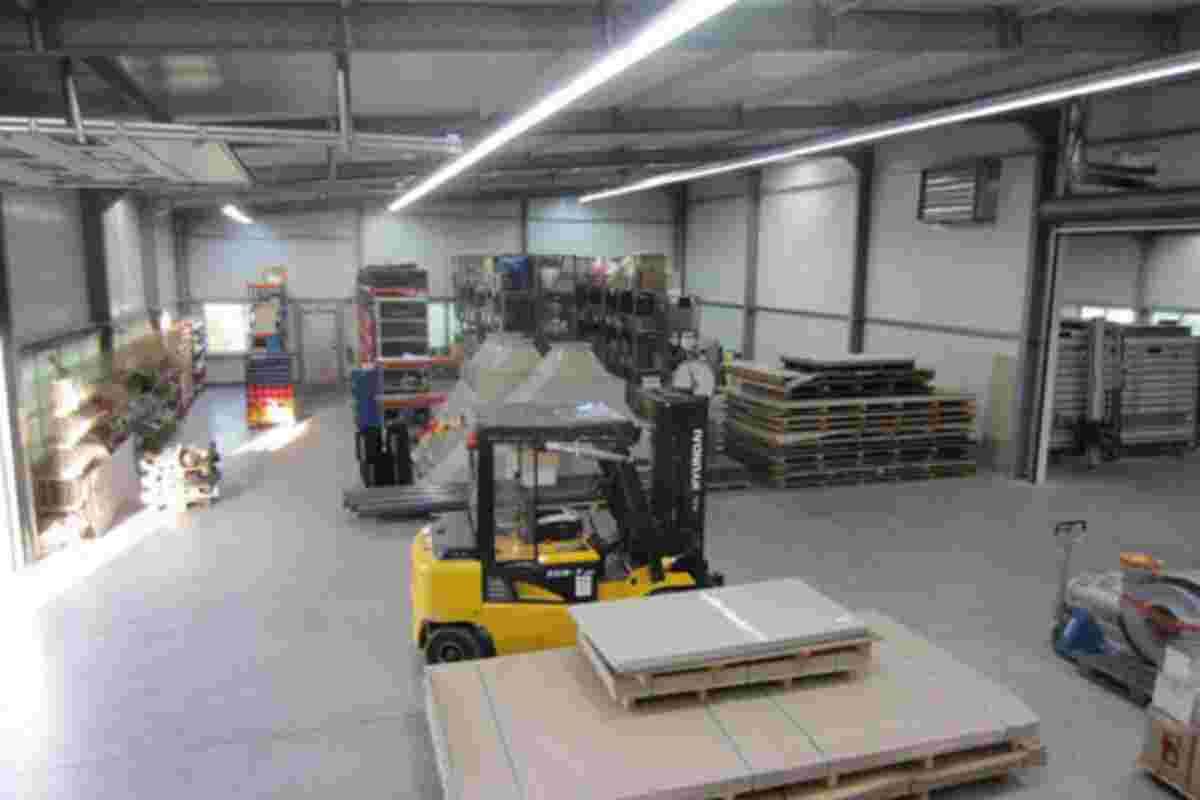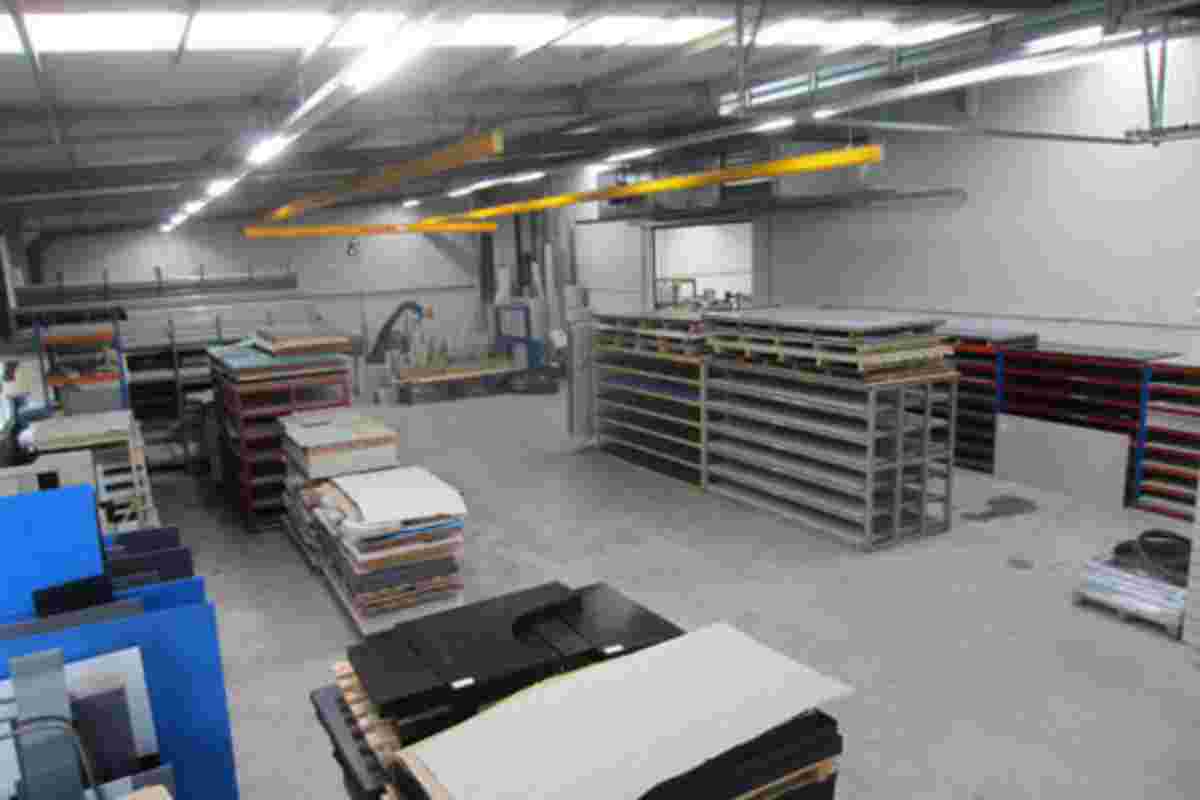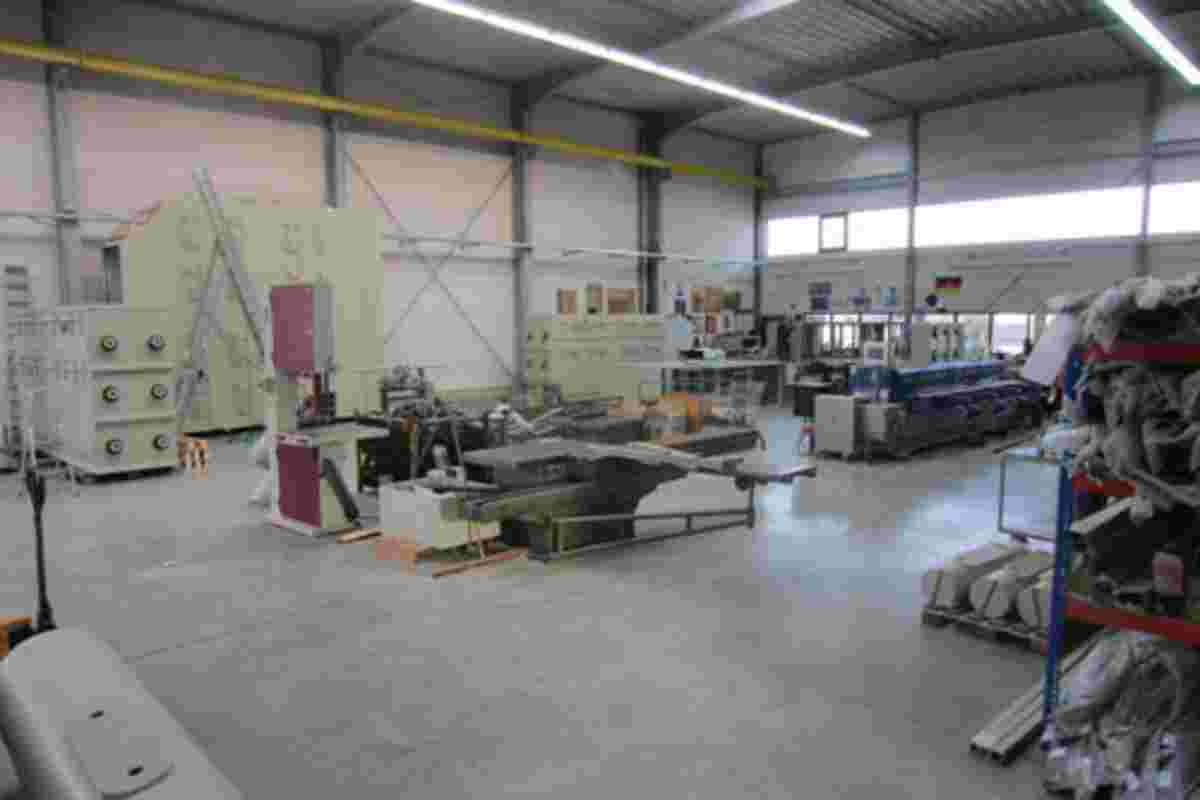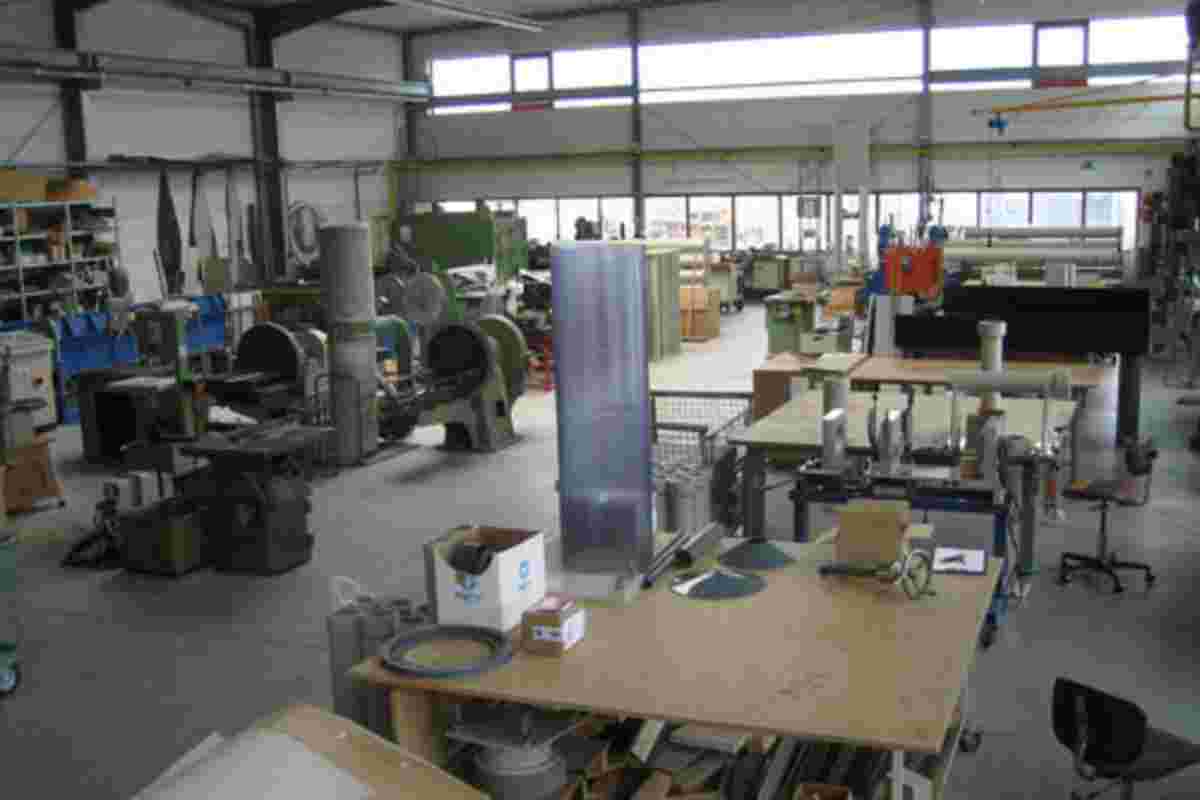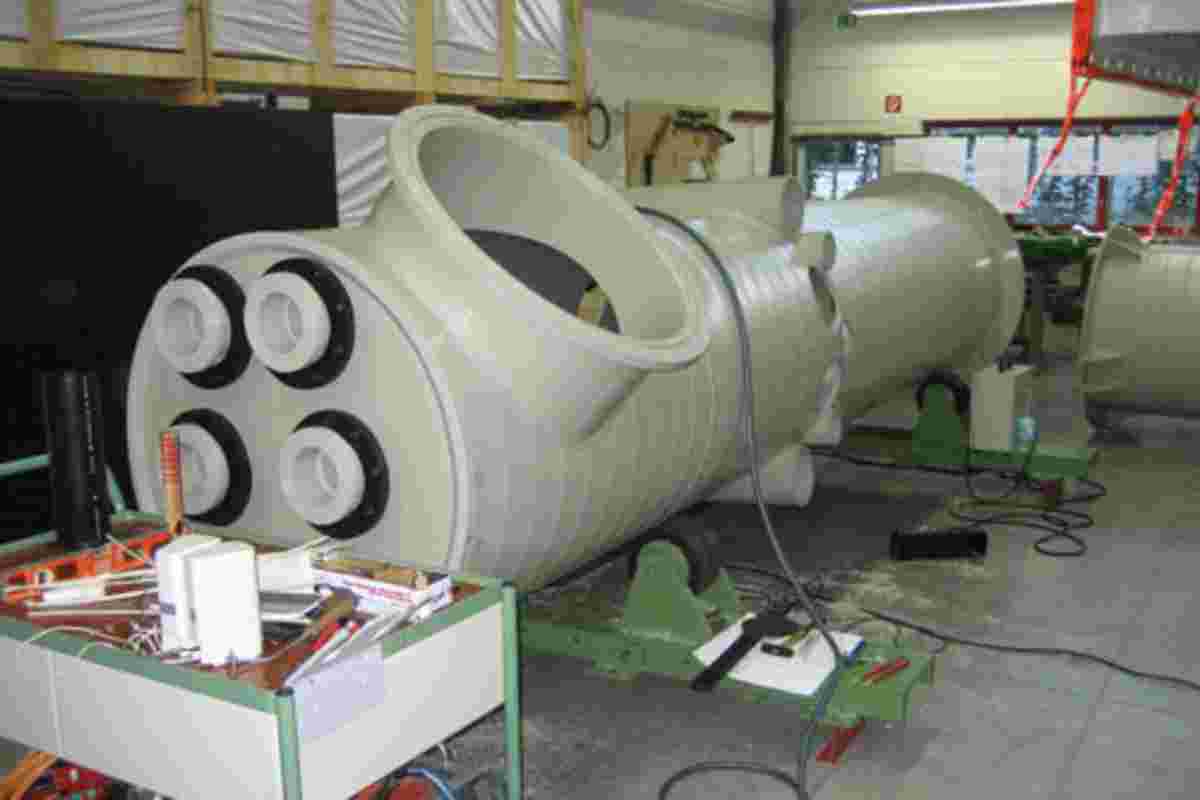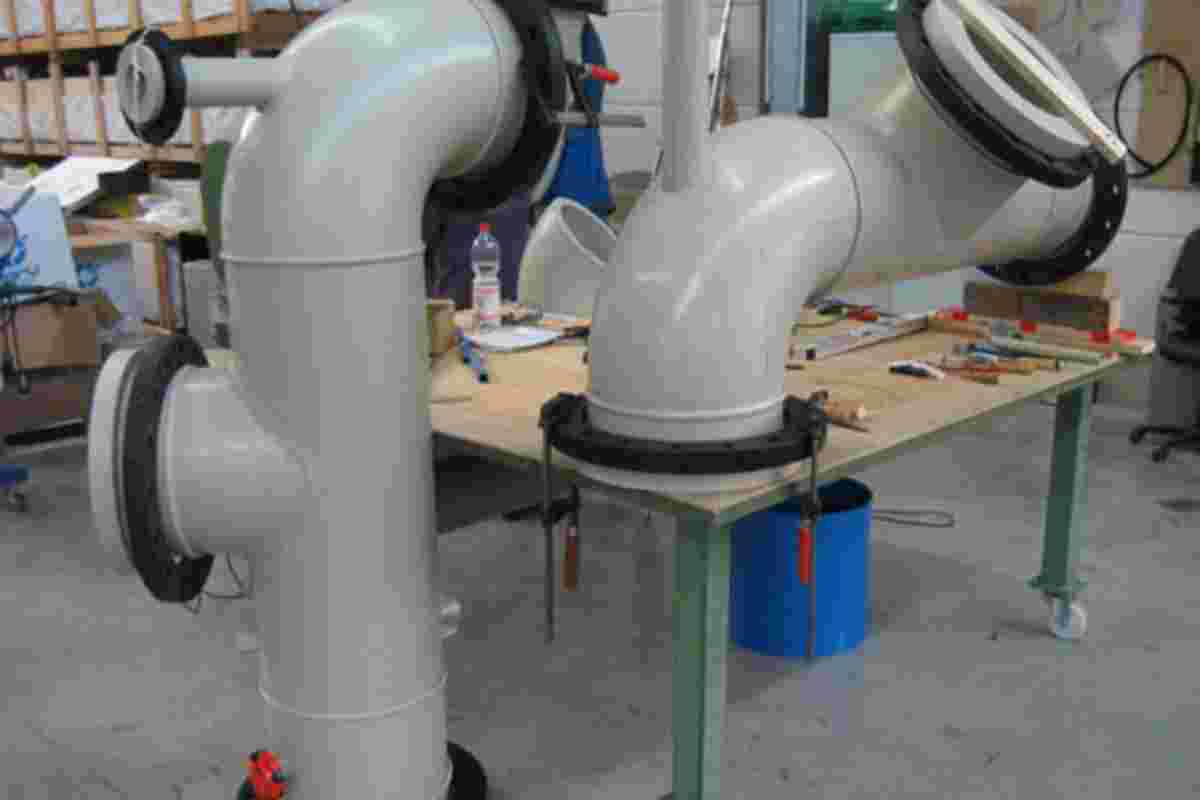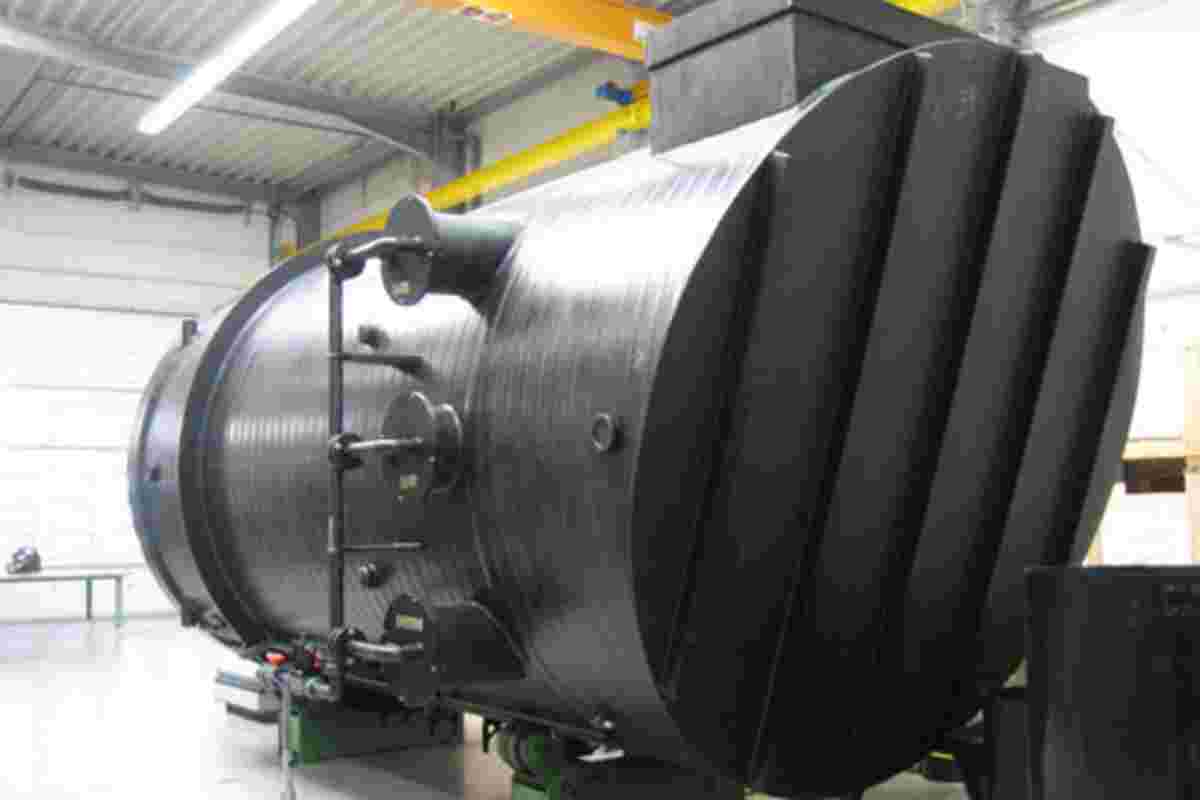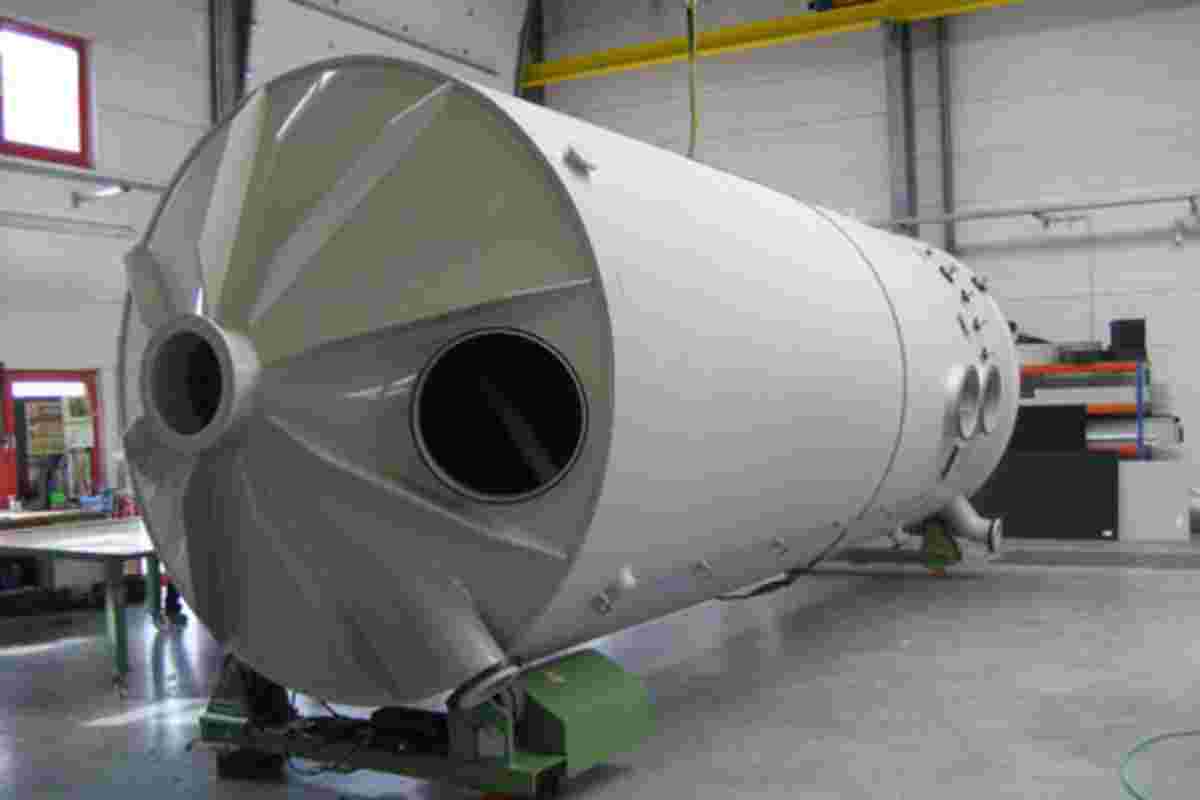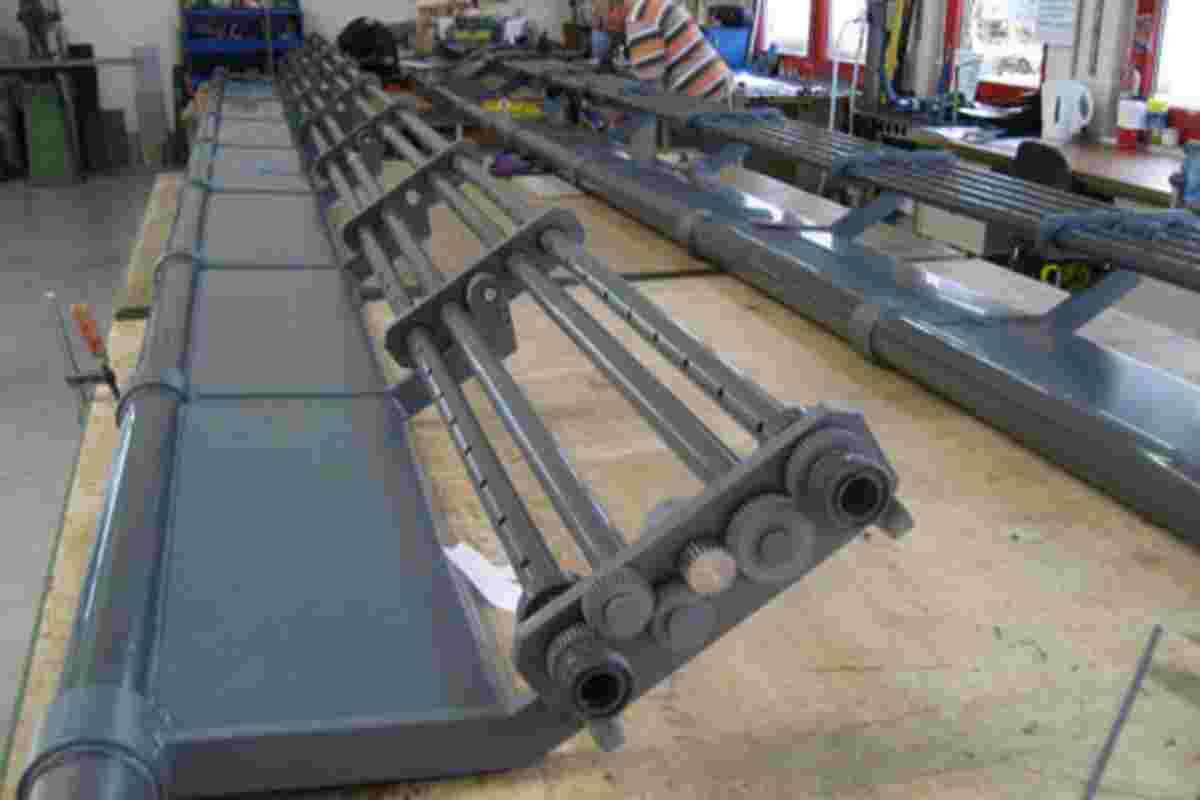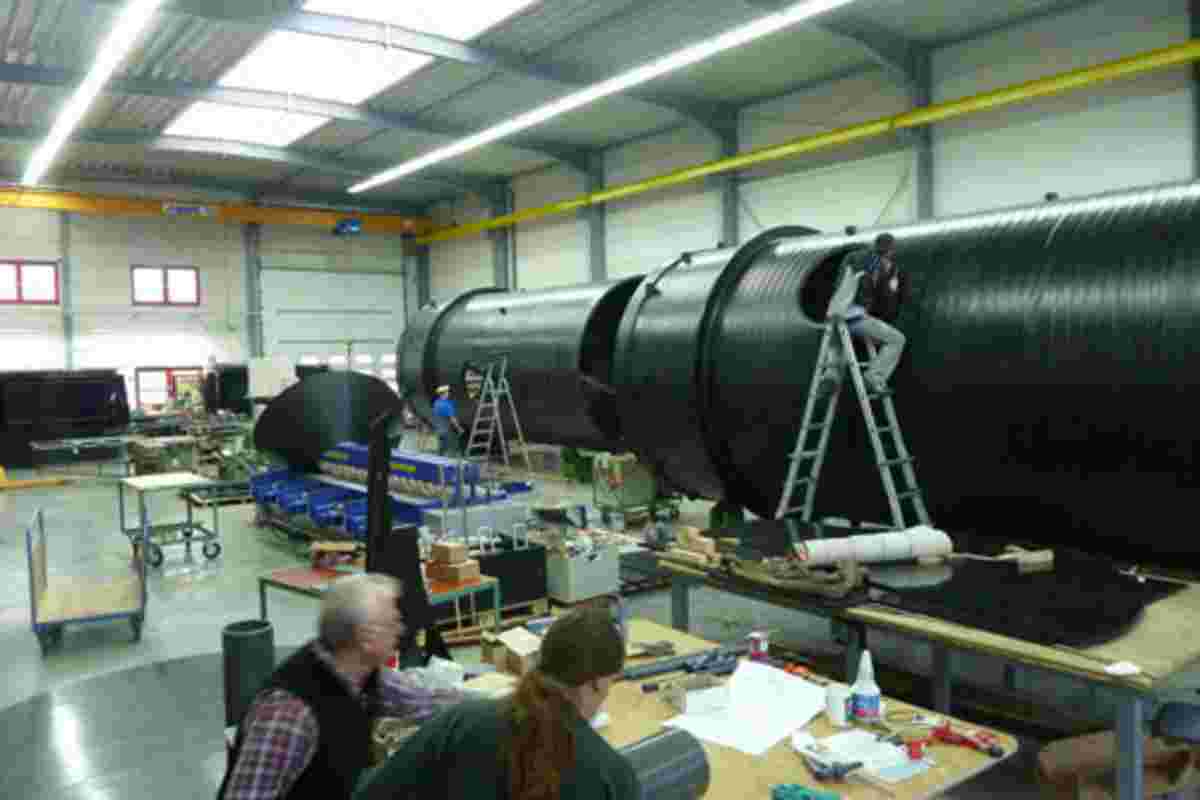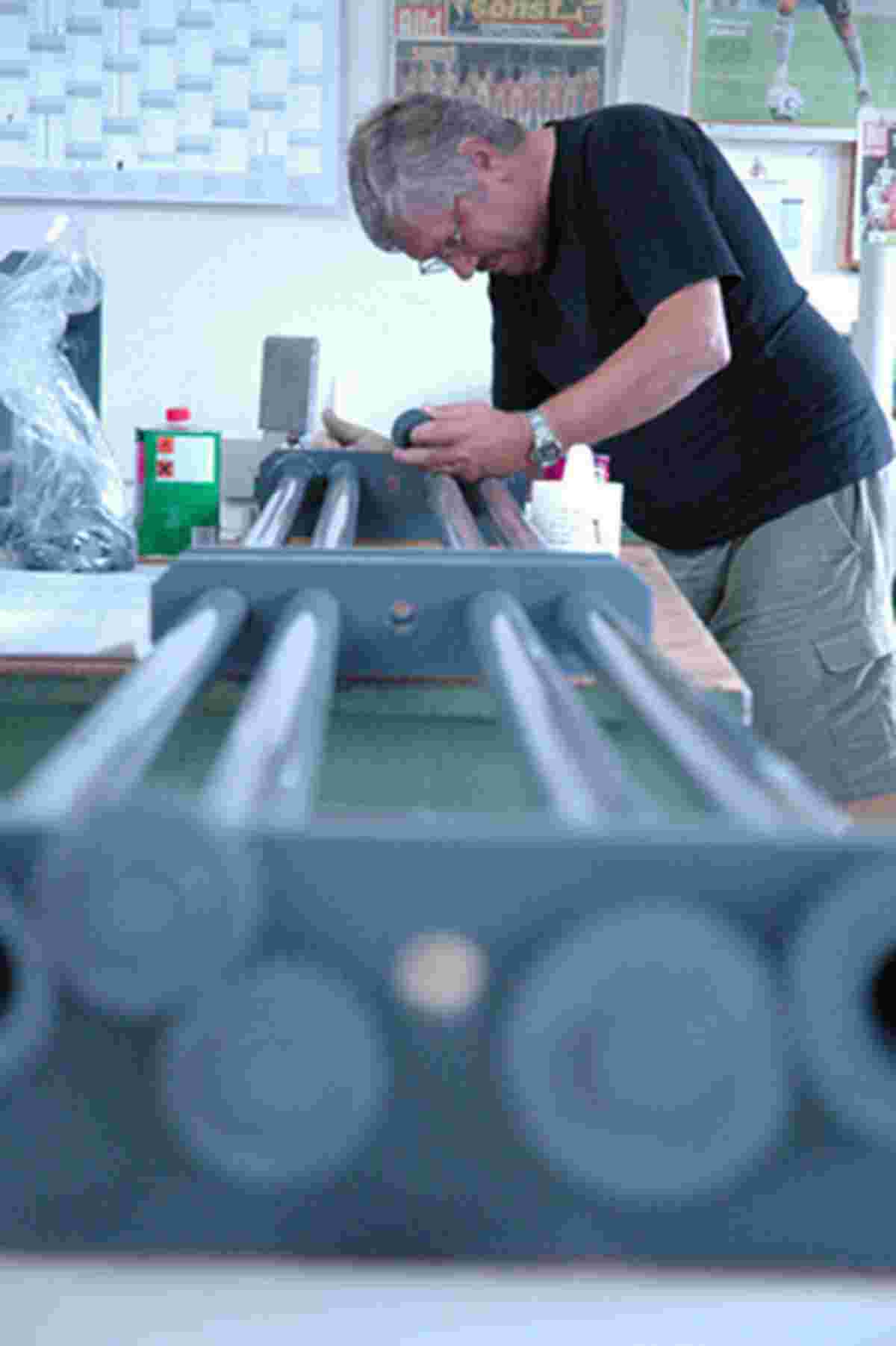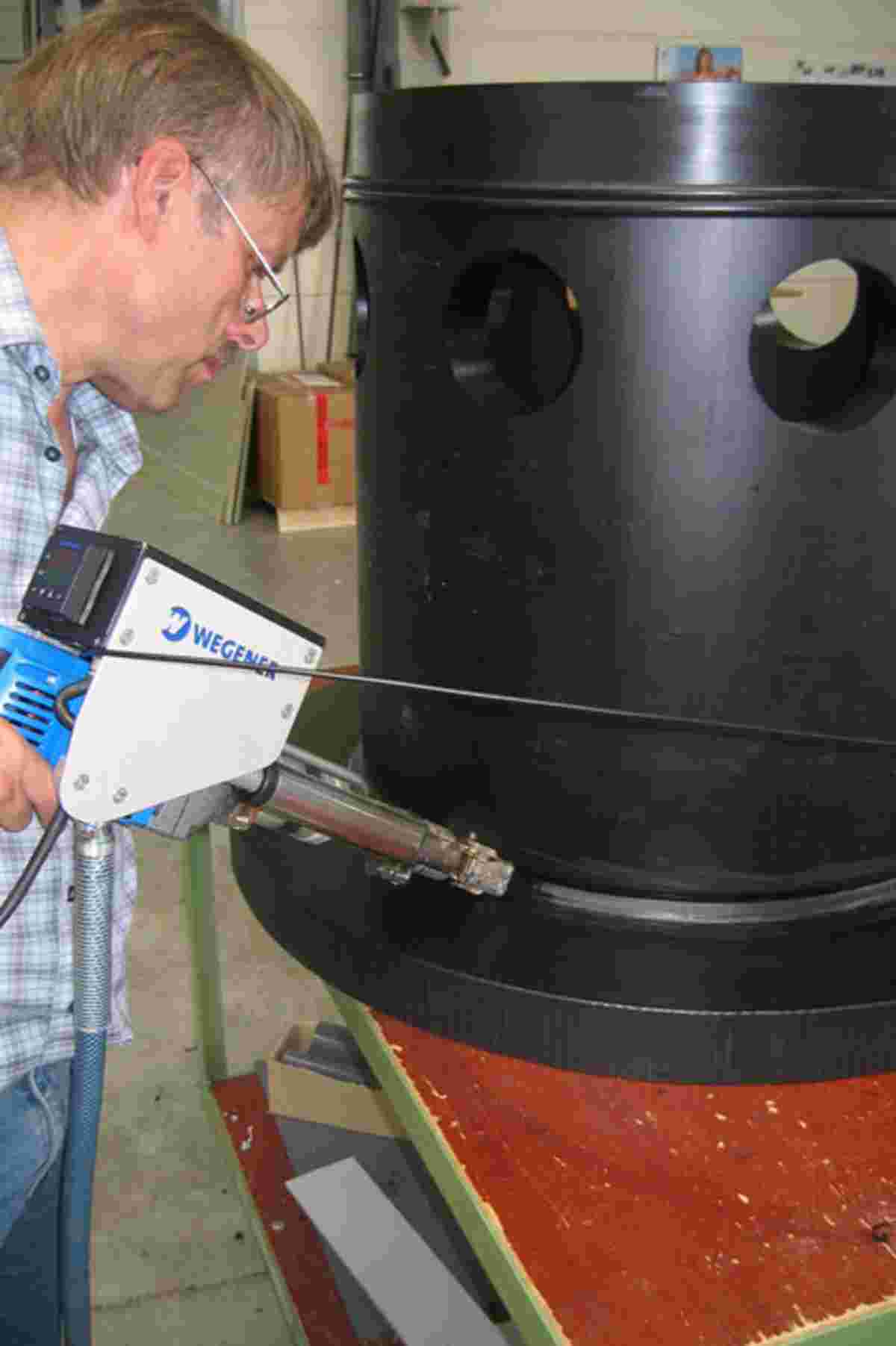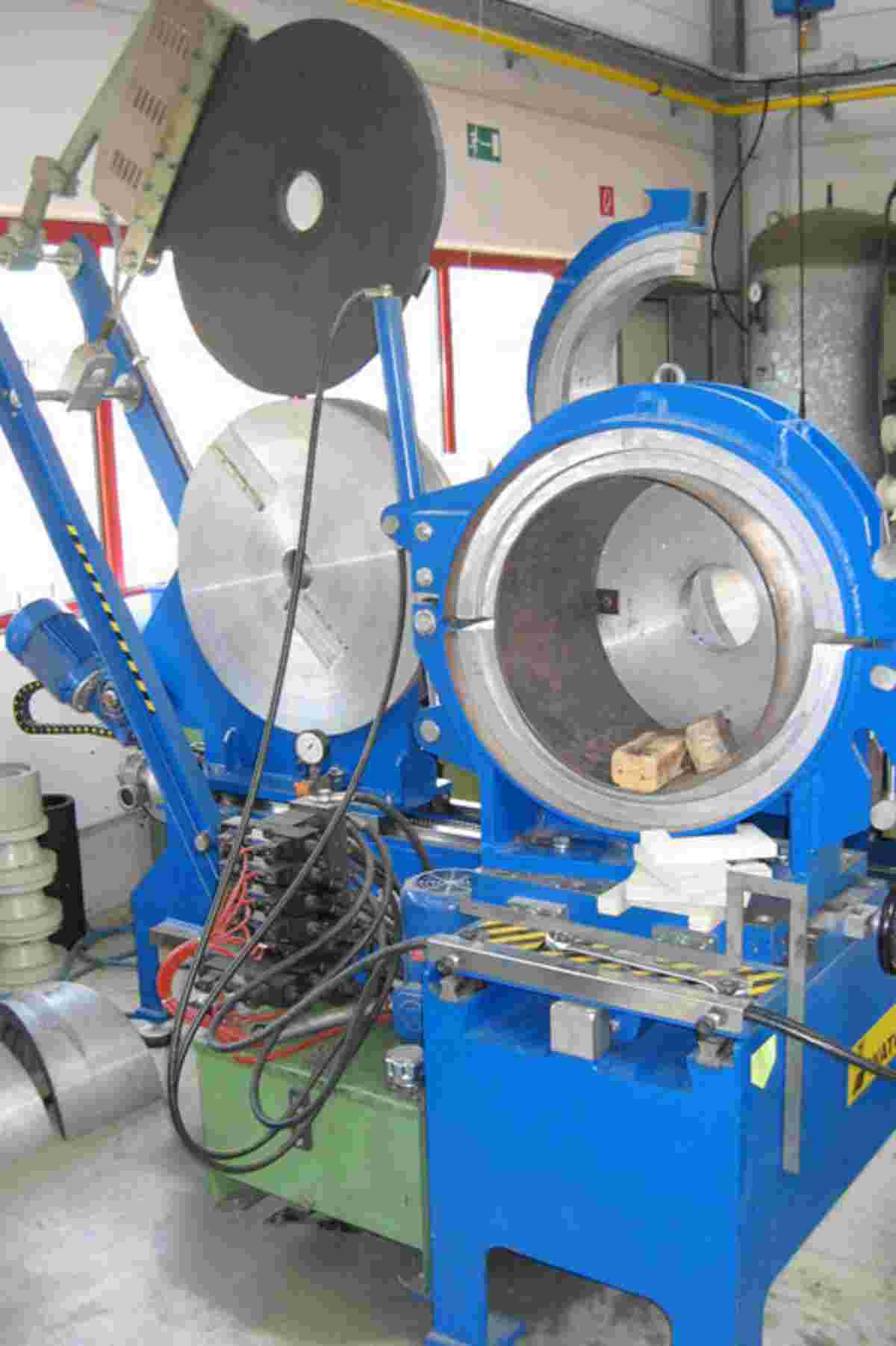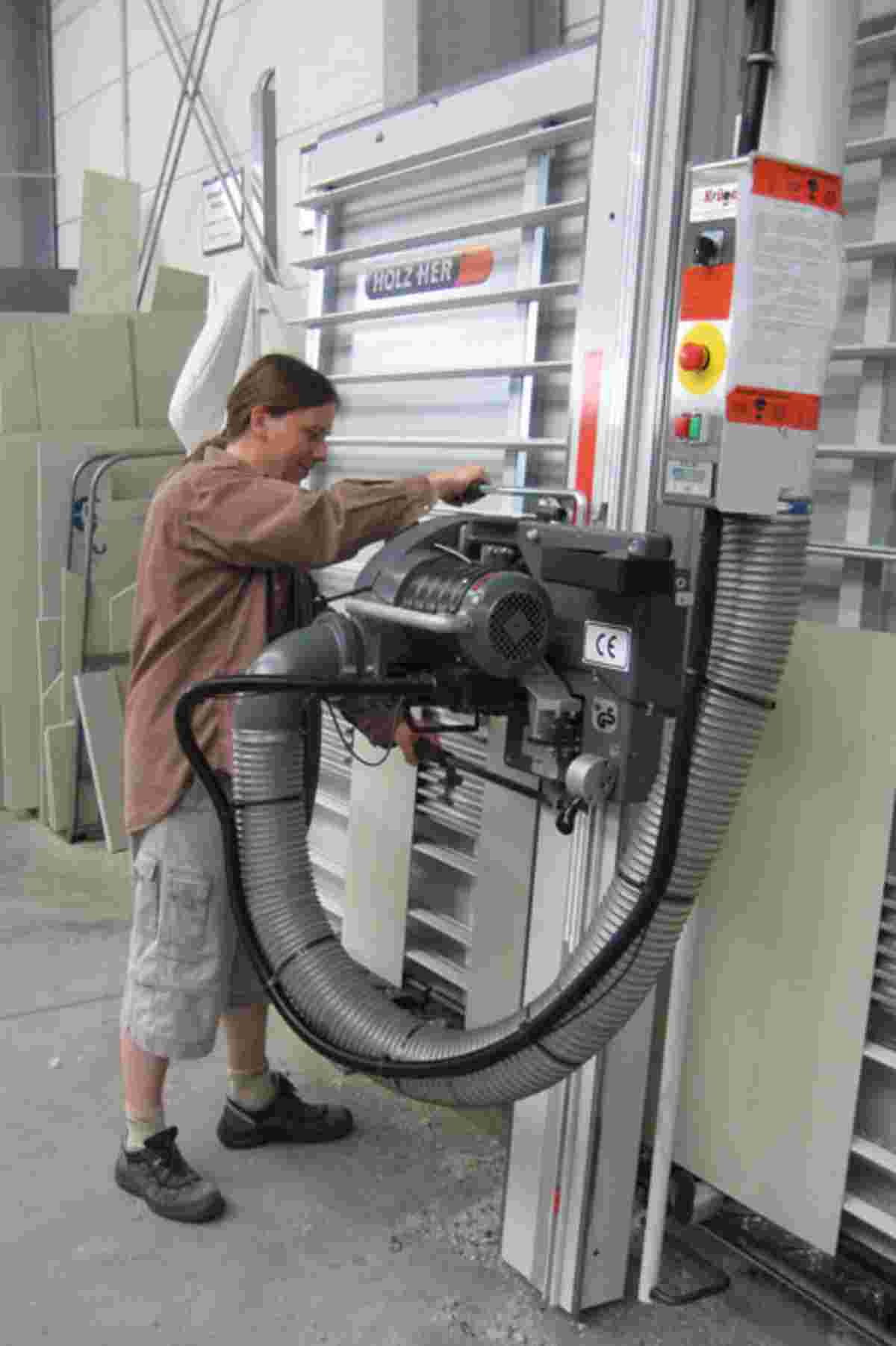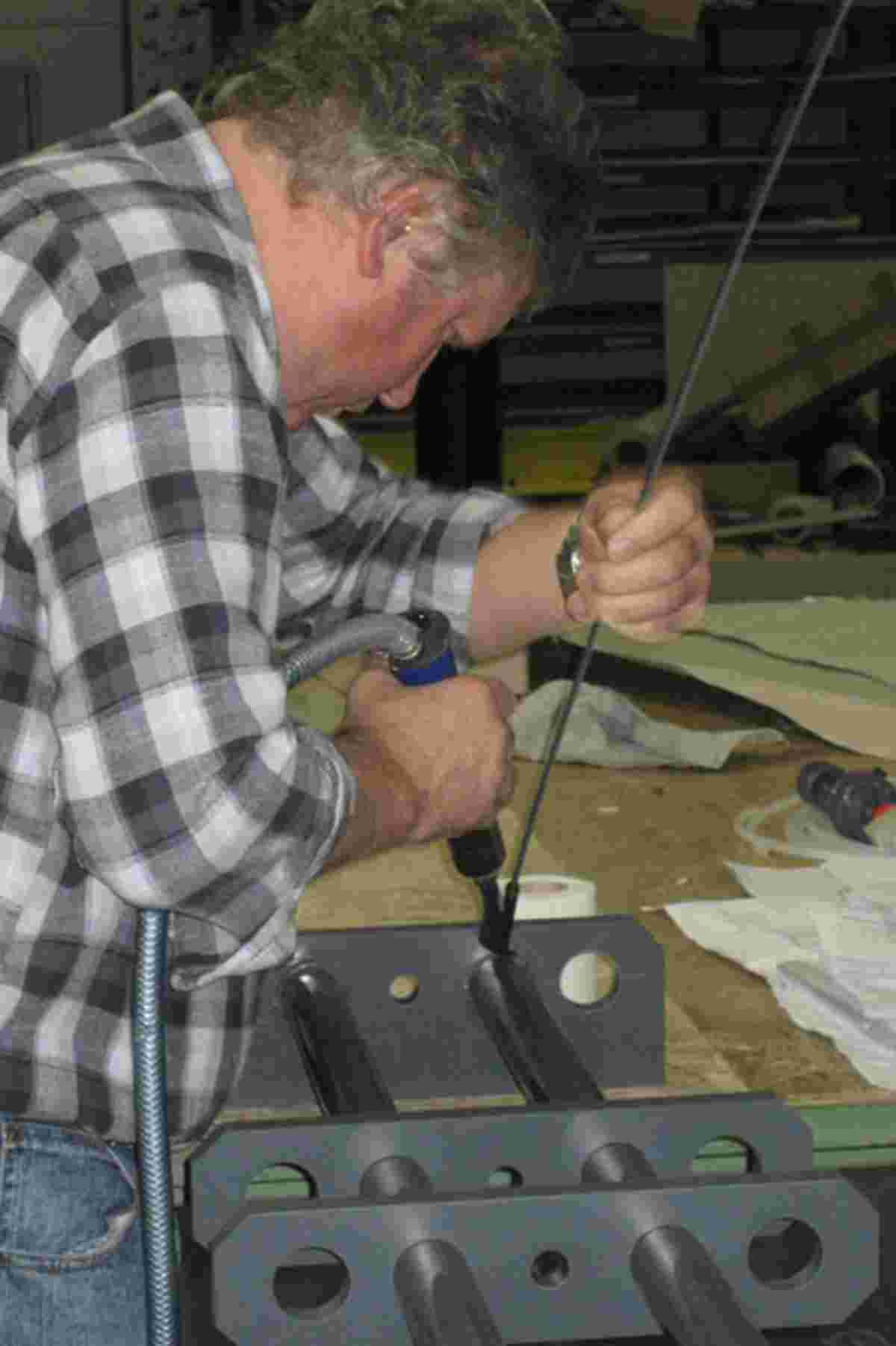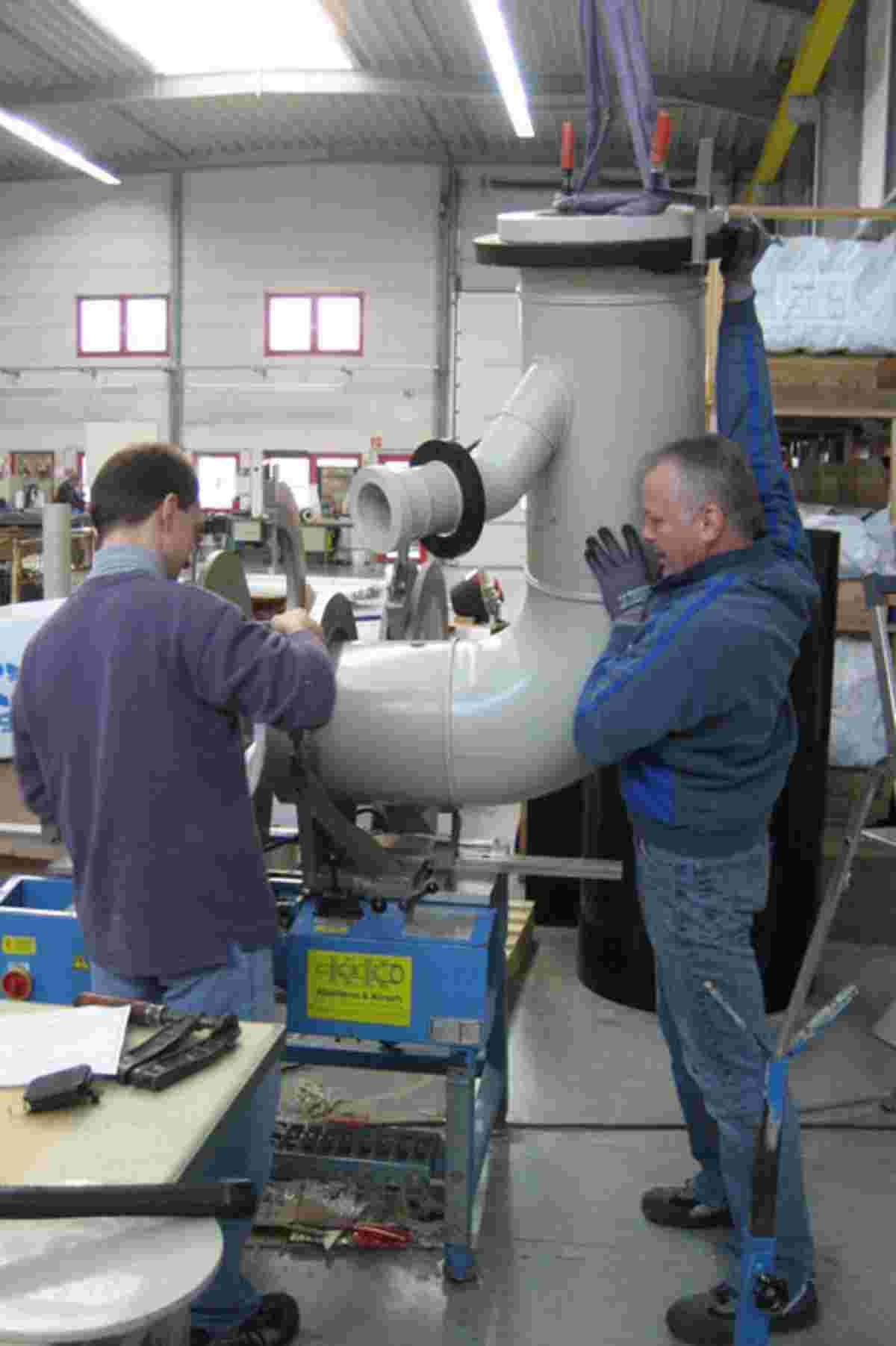Plastic apparatus engineering
Certified specialist firm
Thermoplastic semi-finished products such as sheets, sections, tubes and tube mouldings are machined in the apparatus and container engineering production division and joined, primarily through plastic welding, to form constructions or pipes and, where appropriate, combined with other components to form a complete function unit. This production division is in many cases also called plastic system engineering, plastic engineering or plastic apparatus engineering and also includes plastic pipe engineering.
The following main joining and processing methods are employed in this respect:
- Gluing
- Hot gas string-bead welding
- Hot gas extrusion welding
- Heated tool butt welding of pipes and panels
- Heated tool fold welding of panels
- Hot forming
Butt welding (also known as mirror welding) of tubes is possible up to a diameter of 630mm.
Our fully automatic butt welding machine for panels can weld up to a working width of 4m with a sheet thickness of 40mm. It can also weld up to a sheet thickness of 60mm where a width of 1m is involved. The machine is also equipped with a sheet rolling fixture which aids the welding of panel lengths to form cylinders in a reliable and exact manner (e.g. to produce ventilation pipes or container jackets). Welding operations can be documented in a computer printout.
In addition to the manufacture of individual components, serial parts and assemblies, complete systems can be prefabricated and tested in the company. A trusted specialist firm close by can be entrusted with the required steel construction. The theoretical knowledge and weld quality of our welders are tested every year by TÜV. Weld executions, design features and processing techniques for relevant components are realised pursuant to DVS (German welding association) directives.
Weld leak testing can be conducted through filling with water, pressure testing or high voltage testing.
The materials PE, PP, PVC, PVC-C, PVDF and their configuration variants (e.g. electrically conductive, flame retardant, transparent, etc.) are processed.
A large volume of parts with complicated contours or recesses, grooves or slots and bore holes (e.g. container lids, transitions and housings, etc.) can be prefabricated repeatably and with high precision using our CNC sheet machining centre, followed by subsequent documenting. This improves the avoidance of errors and enhances productivity and repeatability (which can be important in the case of subsequent or replacement deliveries).
 Englisch
Englisch Deutsch
Deutsch